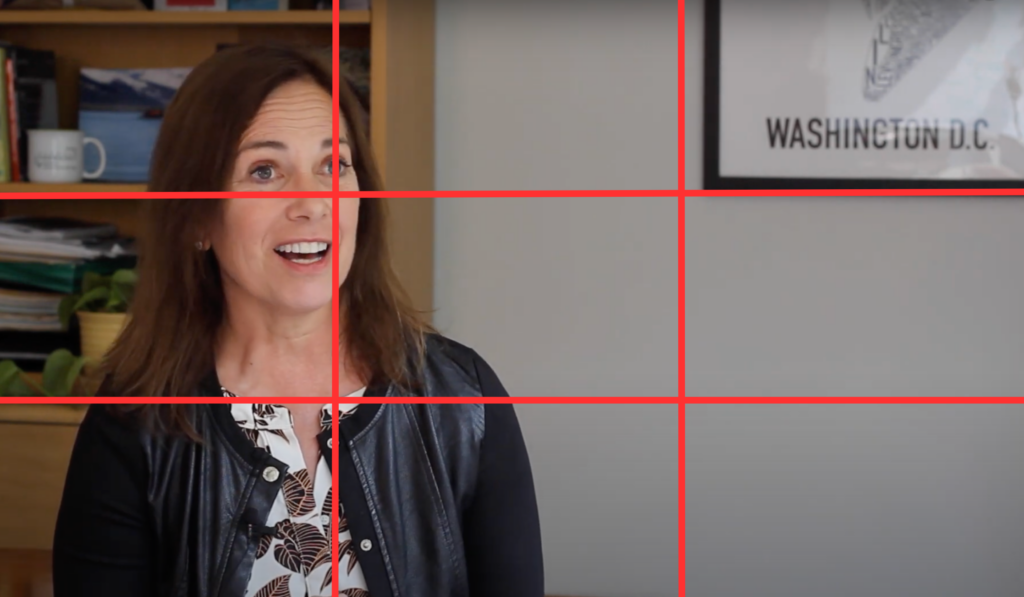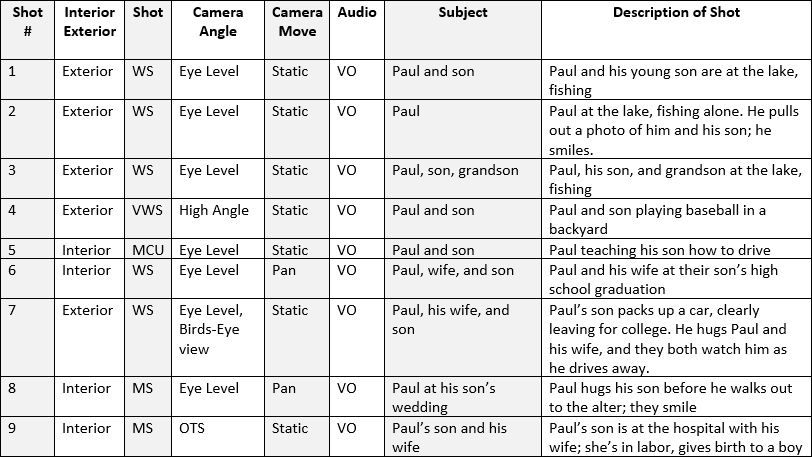Rule of Thirds: The rule of thirds divides your frame into a grid of nine equal sections. Place your subject along the lines or at the intersections, rather than in the center. This creates a visually pleasing and balanced composition that draws the viewer’s attention.
Learn the Basic Shots:
Basic Camera Movement:
Be Precise! More Considerations:
- Headroom: When framing an interview, ensure there is adequate headroom above the interviewee’s head. This space provides a natural and balanced composition, avoiding the feeling of being cramped or claustrophobic.
- Avoid Direct Eye Contact: When interviewing someone, position the shot at an angle that makes the individual appear as though they were looking off camera at the interviewer, not directly at the lens. Doing so could potentially make your audience feel uncomfortable.
- Zoom with Your Feet: Avoid using the zoom feature on your camera, as it can compromise the image quality. Instead, physically move closer or farther away from the subject to achieve the desired framing.
- Stability is Key: Ensure your shots are steady and free from unnecessary camera movements. Use a tripod or stabilize the camera to avoid shaky footage that can be distracting to viewers.
- Lighting Considerations: Position the primary light source behind the camera, illuminating your subject evenly. Refer to lighting diagrams to ensure proper lighting techniques that enhance the visual quality of your video.
- Keep it Concise: Keep your video length concise. Maintaining a short and engaging narrative ensures viewer retention.
- Shoot What Fascinates You: Prioritize capturing subjects and scenes that genuinely interest and inspire you. Your passion will shine through in the final product, captivating your audience and sparking their curiosity.
By applying these principles and techniques, you can create visually appealing and professional-looking videos that hold the attention of your audience. Remember, mastering video composition takes practice, so keep experimenting and refining your skills as you continue your video storytelling journey. Keep these tips in mind as you move onto the next section.
Putting it all together:
Lastly, taking your treatment, storyboard, and shooting plan, it’s time to create a shot list. This is an essential tool that structures your filming experience and can help you make sure that nothing gets left undone.
Shot lists are like checklists that you can use to keep track of your progress while filming and they also contain useful information about each shot you want that can help communicate your shooting plan to your camera operator, sound recorder, subjects, and other crew members.
Each shot list contains information describing whether the shot takes place inside or outside, what shot type you want to capture, what kind of camera movement you may use, which subjects or people are in the frame, and a basic description of what’s happening.



























